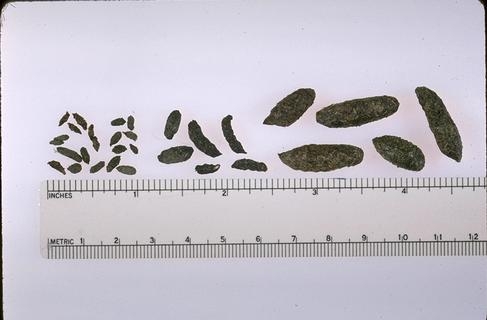![Female German cockroach with egg case. [J.K. Clark] Female German cockroach with egg case. [J.K. Clark]](http://ucanr.edu/blogs/UCIPMurbanpests/blogfiles/43940.jpg)
Consider the following pests when thinking whether you should reduce clutter and get rid of unneeded items in your house:
Cockroaches may come into contact with human and pet excrement and can transmit bacteria to food. They prefer to hide in warm, moist environments. The German cockroach female is capable of laying over 30,000 eggs per year, and this kind of population can go unnoticed in cluttered areas. There are several species of cockroaches, so identification is the first step in management. Consult the Pest Notes: Cockroaches for help.![Fecal spots, eggs and cast skins of bed bugs. [D.H. Choe] Fecal spots, eggs and cast skins of bed bugs. [D.H. Choe]](http://ucanr.edu/blogs/UCIPMurbanpests/blogfiles/43938.jpg)
Clothes moths may attack fur, feathered items and fabric. They can also attack wool carpets, rugs, and clothes in both storage or active living areas. These moths may be difficult to eradicate. Read the Pest Notes: Clothes Moths for more information.
Rodents such as mice and rats can squeeze through the tiniest openings in buildings. They are looking for food and shelter and adequate hiding space to raise their young. The presence of rodents can be hard to detect in cluttered areas that don't get a lot of use or attention. Read about how to exclude these pests or control them if already present, in the Pest Notes on House Mouse and Rats.
Bed bugs can hide in more than just the bed. Cluttered areas, furniture, and other household belongs can harbor bed bugs as they wait for a host. If you think you may have bed bugs or to learn ways to prevent bed bug introductions, consult Pest Notes: Bed Bugs, where you can also watch videos about inspecting for bed bugs.
Pantry Pests are mostly moths and small beetles that can infest and taint a wide variety of foods with their bodies and by-products. To learn how to avoid introducing them or eliminating an existing infestation, visit Pest Notes: Pantry Pests.
Widow Spiders such as the infamous black widow prefer to hide in dark spaces and may be found in cluttered areas. Learn management techniques by reading the Pest Notes: Widow Spiders and their Relatives.
Spiders like cellar spiders, sac spiders and wolf spidersmay also hide in cluttered areas. The jaws of most spiders are too small to bite humans, but their presence may be a nuisance.
Practice integrated pest management around the home by using good sanitation and limiting hiding places. Don't stress if you have large amounts of clutter-- work on going through one pile or area at a time.
Attached Images:
![Cluttered garage has many hiding spaces for pests. [A. Schellman] Cluttered garage has many hiding spaces for pests. [A. Schellman]](https://ucanr.edu/blogs/UCIPMurbanpests/blogfiles/43939.jpg)